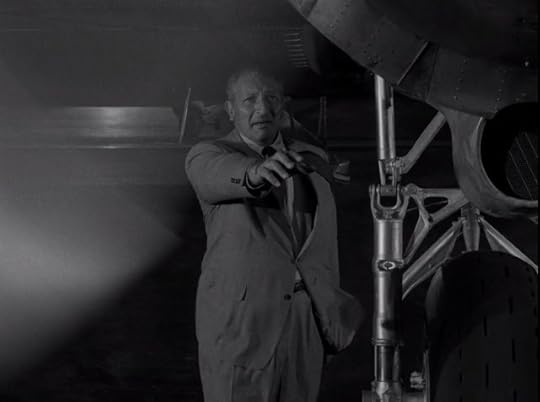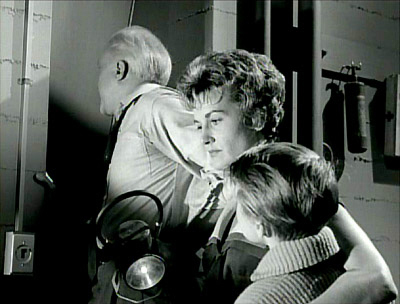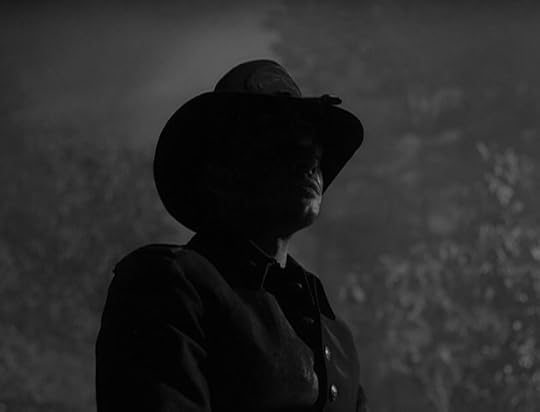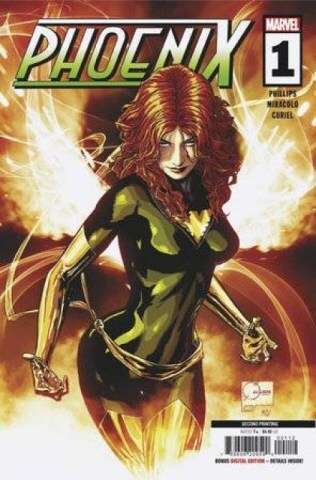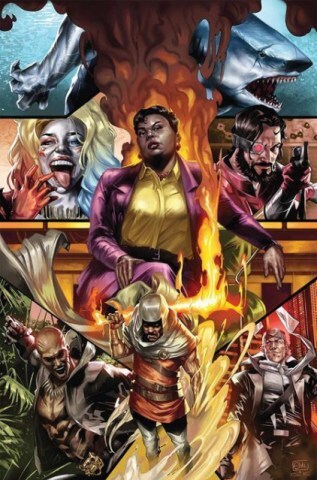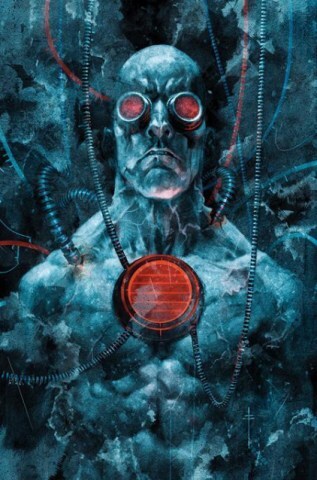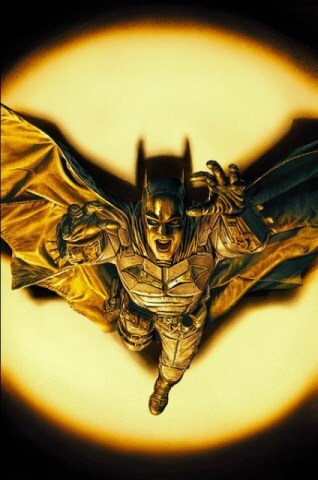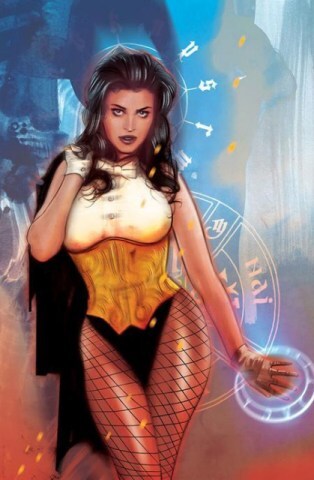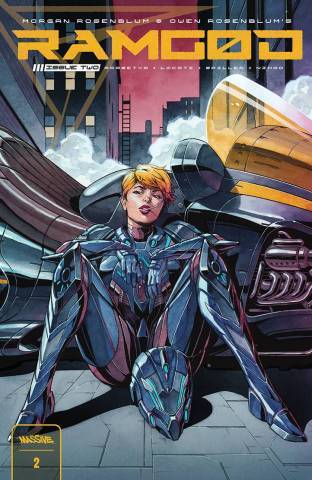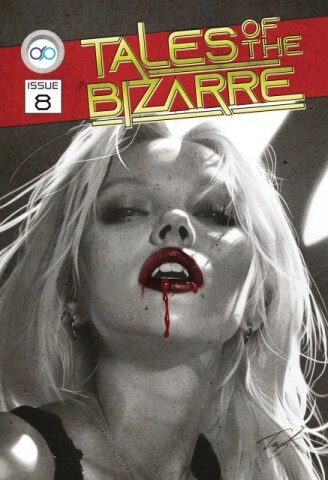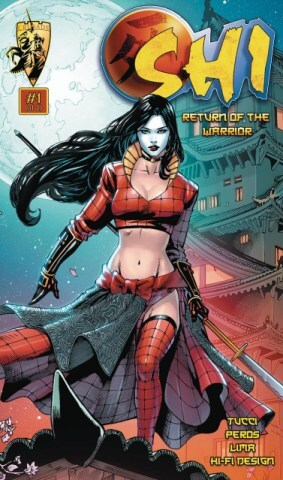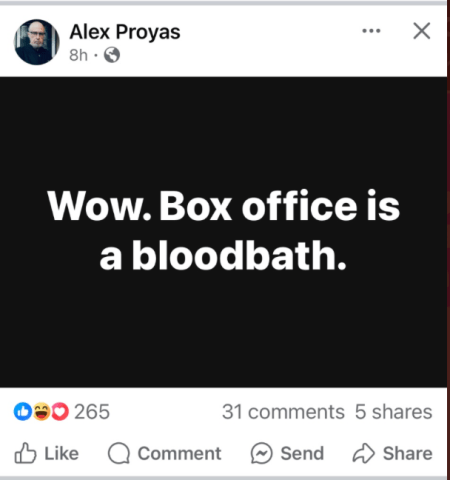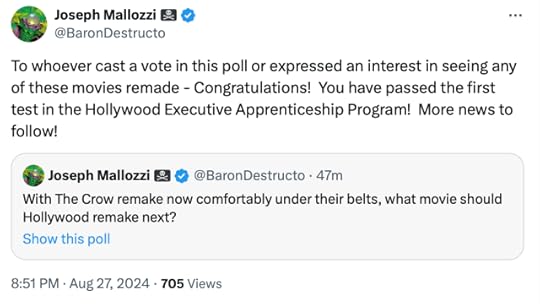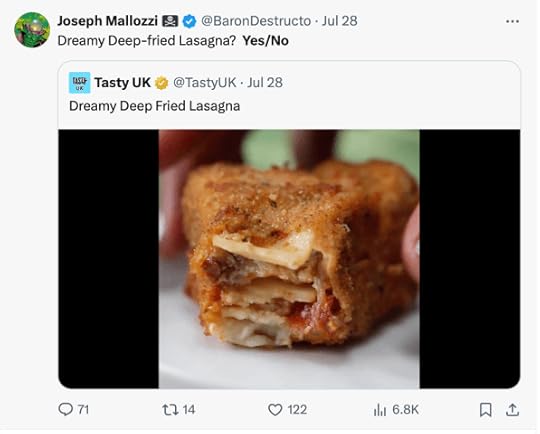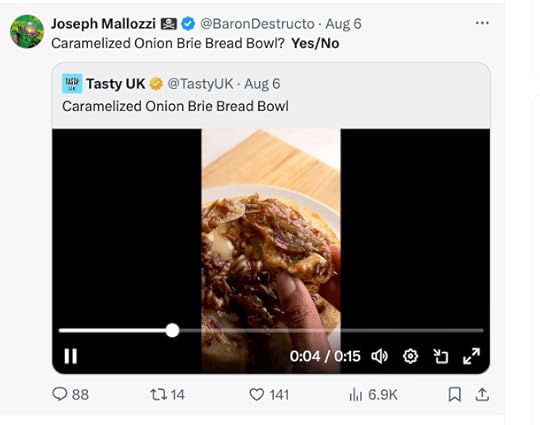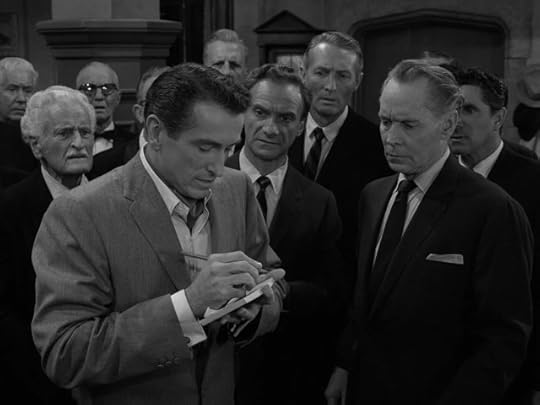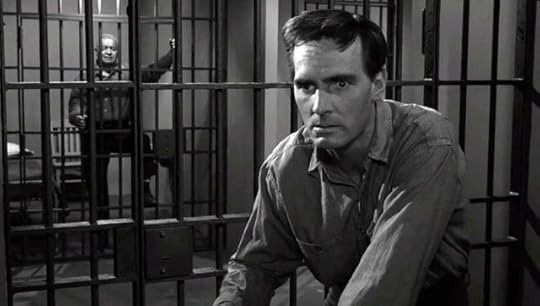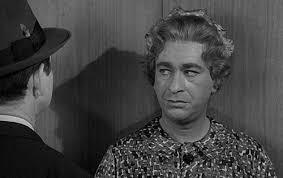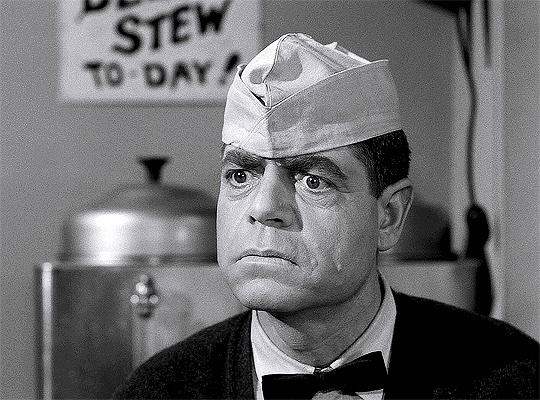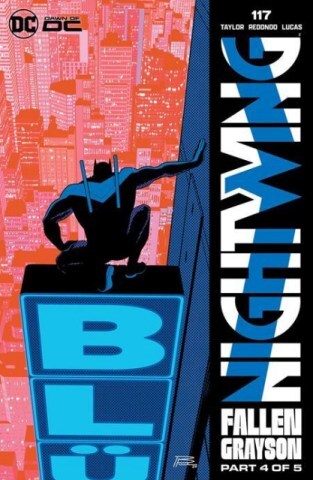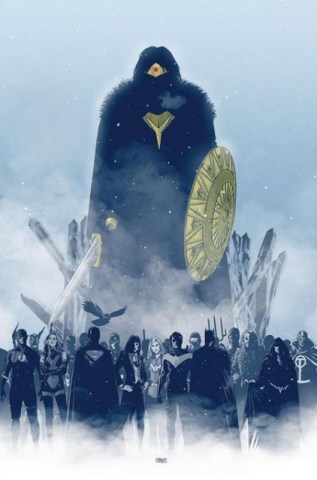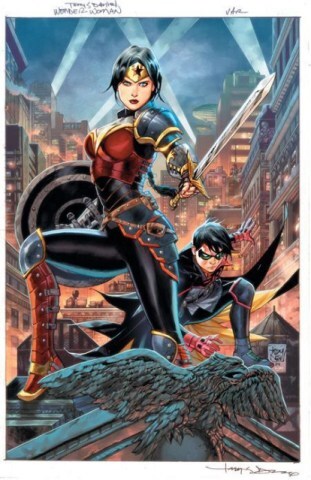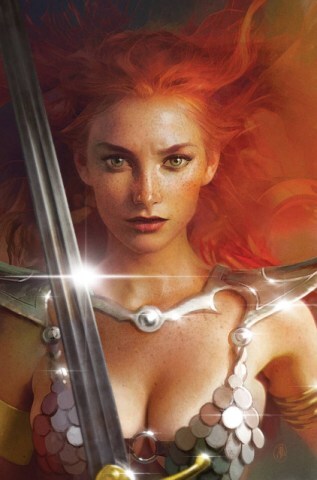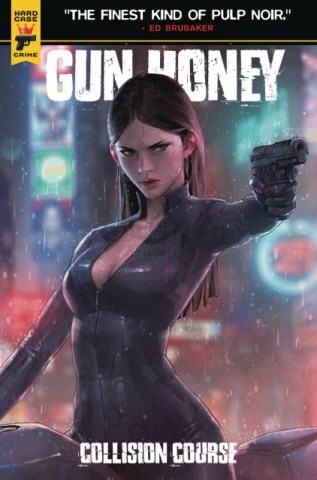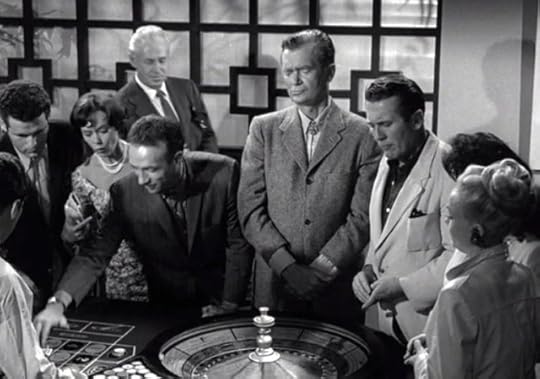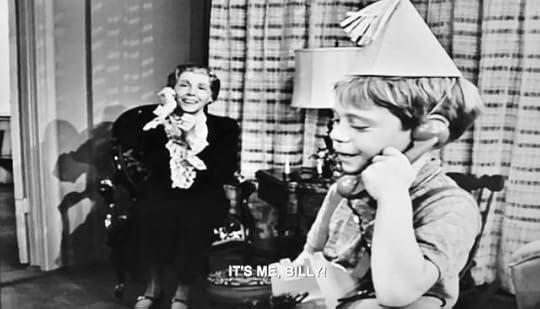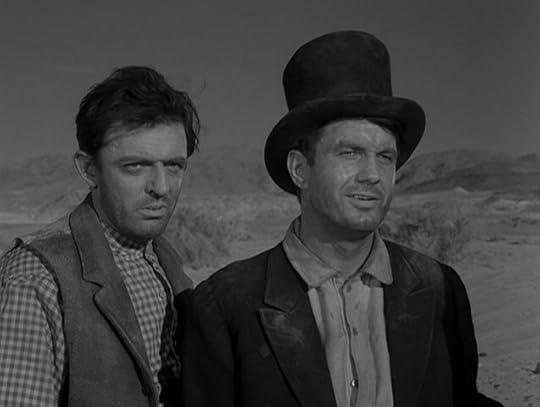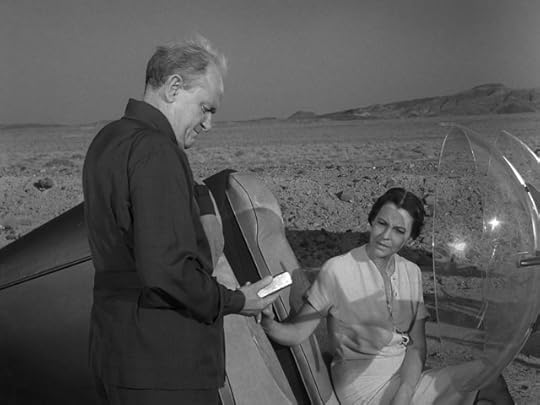Joseph Mallozzi's Blog, page 44
August 29, 2024
August 29, 2024: Our Twilight rewatch continues with season 3, episodes 1-4!
Season 3, Episode 1, “Two”
This episode first aired February 15, 1961.
The episode was shot on the long-neglected Hal Roach Studios in Culver City that were previously used for production on the 1930’s The LIttle Rascals series.
Writer-director Montgomery Pittman wanted to cast his step daughter, Sherry Jackson, as the woman, but network executives felt she was too young at 19 and preferred Elizabeth Montgomery who was 29 at the time.
Montgomery only utters a single word of dialogue in this episode, “Pekrasny”, which means “pretty” in Russian.
The far futuristic barbershop in the ruined city advertized a hairtcut for a whopping $5, which was roughly four times the price of what you’d have paid back in 1961.
Director Montgomery Pittman started his career as an actor before transition to writing and directing. He wrote and directed two more episodes of the series, season 3’s “The Grave” and season 4’s “The Last Rites of Jeff Myrtleback”. He died of cancer less than a year after this episode aired.
Actress Elizabeth Montgomery was a distant cousin of axe murderer Lizzie Borden. She is no doubt best remembered for her portayal of Samantha Stephens in Bewitched (1964). Her husband and the show’s director, William Asher, noted that she would twitch her upper lip when nervous, giving the impression that she was wiggling her nose – so they used it as a spellcasting conceit in the series. At the conclusion of the show’s eighth season, Montgomery fell in love with the show’s script supervisor and divorced Asher, thereby dooming a ninth season pick-up. A nine foot tall bronze statue of Montgomery riding a broomstick sidesaddle can be found in Salem, Massachussetts.
Reflecting back on her Twilight Zone experience, Montgomery noted: ”Making this episode was creepy. I couldn’t help thinking what it would be like if I went around the cocrner and there actually wasn’t anyone there – nothing but rubble, grass growing in the street, the debris of a dead human race.”
Charles Bronson, who played the man, changed his name from Buchinsky to Bronson during the Red Scare of the 1950’s, naming himself after the Bronson Gate at Paramount Studios. He built a career playing the strong silent types in movies like The Magnificent Seven (1960), The Great Escape (1963), and The Dirty Dozen (1967). His portrayal of the claustrophobic tunnel rat Danny Velinsk in The Great Escape was modeled after his own experience working the coal mines with his father.
Bronson worked overseas in the late 60’s, starring in several international westerns. Sergio Leone once called him “the greatest actor I ever worked with”. Returning to the U.S., made his mark in some notable urban thrillers such as The Mechanic (1972), The Stone Killer (1973), Mr. Majestyk (1974), and perhaps his most famous role in Death Wish (1974) at the age of 53, a part he got because the original actor considered, Henry Fonda, was so disgusted with the script he turned it down.
Bronson enjoyed a busy career throughout the 80’s and 90’s. Among the roles he was considered for were leads in Walter Hill’s The Driver (1978), Superman (1978), Escape from New York (1981), and Die Hard (1988). According to Billy Crystal, he was offered the role of Curly in City Slickers (1991), but rudely turned it down after learning the character died. Jack Palance, who ended up getting the role, earned an Oscar for his performance.
Bronson was a private man who rarely did interviews. He suffered from Alzheimer’s late in life and passed away in 2003. One of the best Charles Bronson stories comes from Kurt Russell who worked with him when Russell was just a kid. After finding out that it was Bronson’s birthday, young Russell gave him a present. The older actor took it and walked away without saying a word. Later, Russell was called to Bronson’s office where an emotional Bronson confided that he reacted the way he did because it was the first time anyone had ever given him a birthday present. Bronson ended up reciprocating by gifting Russell a skateboard for his birthday, and even got a matching one for himself. But later during production, Bronson noticed that Russell wasn’t using the skateboard. He asked why and Kurt told him that he was told he wasn’t allowed to skateboard on the lot. Incensed, Bronson grabbed both their skateboards and, Russell in tow, marched into the office of the head of the studio and informed him they would be skateboarding around the lot.
A solid start to season 3. Bronson is fantastic but Mongomery – boy, she is an world all her own. I had a huge crush on her during her Bewitched days and she is nothing short of drop-dead-gorgeous in this episode – with the acting chops to match. Didn’t love the pew-pew energy beams from the rifle, or the 5-year-old canned chicken drumsticks, but they were minor quibbles in an otherwise satisfying episode.
P.S. She looked better in that military uniform than the dress.
Season 3, Episode 2, “The Arrival”
This episode first aired September 22, 1961.
The script was originally titled “DC-3”.
The exterior shots and hangar scenes were filmed at Santa Monica Airport while the rest of the scenes were filmed on an MGM sound stage.
The scene in which the Grant Sheckly character approaches the rotating propellor blade was eerily prescient. Episode director Boris Sagal was killed twenty years later when he accidentally walked into a helicopter’s rear rotor blade. After returning from filming aerial shots for the movie World War III (1982), he turned the wrong way, apparently preoccupied with his work, and suffered devastating head and shoulder injuries. Production resumed the next day with a new director.
Actor Fredd Wayne, who played Paul Malloy, had previously appeared as Barney Kaemener in “Twenty-Two”.
Noah Keen, who plauyed Bengston, would return later the same season for an appearance in “The Trade-Ins”.
This one was reminiscent of season 1’s “A World of Difference” minus the clever twist and thought-provoking ambiguity. The classic “It was all a dream” conceit devoid of nuance doesn’t exactly make for compelling viewing. Not a Top 10 pick.
Season 3, Episode 3, “The Shelter”
This episode first aired September 29, 1961.
Reflecting back on this episode, Rod Serling said: “For seemingly realistic reasons, it’s my feeling now that if we survive, what do we survive for? What kind of world do we go into? You know, if it’s rubble, poisoned water, and inedible food, and my kids have to live like wild beasts, I’m not partiucialry sure I want to surivve in that kind of world.”
A week after this episode aired, President John F. Kennedy advised Americans to build bomb shelters to protect themselves from possible atomic fallout in the event of a nuclear exchange.
Early in the episode, all the t.v. and radio stations go to static and citizens are directed to the CONELRAD stations. The Control of Electromagnetic Radiation was a Civil Defense radio station that would broadcast official instructions and information in the event of a national emergency. It was eventually replaced by the Emergency Broadcast System which was, in turn, replaced by the Emergency Alert System.
The voice of the emergency broadcast announcer belonged to actor James Coburn.
Late in the episode, while trying to gain access to the bomb shelter, one of the characters suggests heading over to Bennett Avenue for a pipe they can use as a battering ram. Bennett Avenue was the street in New York where Rod Serling grew up.
This episode sparked a fair audience response. According to Serling: “We had 1,300 letters and cards inside of two days. I think we hit some kind of nerve.”
“The Shelter” inspired an episode of Happy Days (1974) in which the Cunninghams’ plans to build a bomb shelter in their backyard are complicated by friends wanting to know if they will be included when the time comes. It also inspired The Simpsons episode “Bart’s Comet” which saw almost all of Springield squeeze into Homer’s bomb shelter.
This was the first of the eight Twilight Zone episodes Lamont Johnson would direct and, from the sounds of it, probably wasn’t his favorite: “I found the script a little preachy, but I just got throughly involved with the actors – Jack Albertson was a joy to work with. It was just a question of working on the characters of these wonderful charactor actors, and getting as much out of them as possible, which saved it to a degree.”
Larry Gates, who played Dr. Bill Stockton, broke out late in life, kicking off a successful Broadway career in his early 40’s. He received a Tony nomination for his work on stage as well as a Daytime Emmy award for his portrayal of H.B. Lewis on The Guilding Light, a role he played until his death. Gates reflected back on this episode: “We had a wonderful cast and an excellent director, a happy company and crew and a fascinating script. When I saw the episodes years later, I didn’t like my performance. I thought I had overacted. But the script, direction, and cast made it work.”
Jack Albertson, who played Jerry Harlowe, was a former vaudeville performer-turned-actor perhaps best known for his portrayal of The Man in Chico and the Man (1974). He won an Best Supporting Actor Oscar for The Subject Was Roses (1968) and was one of only 9 actors to score the coveted Triple Crown of Acting: Tony, Emmy, and Oscar. He would make a reappearance in season 4’s “I Dream of Genie”.
Peggy Stewart, who played Grace Stockton, was signed by Republic Pictures early in her career where she made westerns and serials. Over the course of three years, she starred in over 30 films, most of them westerns, but she grew tired of the genre and ended up leaving the film business in 1953 in favor of television work. In this episode, it’s very clear that her character is a tribute to America’s Mom, Barbara Billingsley’s June Cleaver from Leave It To Beaver (1957), from her mannerisms and delivery to her hairstyle and clothing.
Sandy Kenyon, who played Frank Henderson, previously played flight navigator Magellan in “The Odyssey of Flight 33”.
Michael Burns, who played young Paul Stockton (and did, I thought a terrific job for a boy his age), is a former child actor who went on to establish a distinguished career as a historian, writer, and college professor. He was, at one point, considered for a role as one of the band members on The Monkees (1965).
This is one of the higher rated season 3 episodes and while I liked the idea, it played to me like a less provocative, more heavy-handed “The Monsters Are Due on Maple Street”. Also, there were a few instances that left me scratching my head – like the fact that satellites were mistaken for incoming missiles in the first place, and then took half an hour to check out. And when the neighbors are arguing about the fact there is so little room in the bomb shelter and which family to save my initial thought was: “Uh, what about just the kids?”. I mean, wouldn’t that be the no-brainer decision?
All in all, a fine episode but, surprisngly, not one I think will be making my season 3 Top 10 list. But I guess we’ll see how the rest of the season pans out.
Season 3, Episode 4, “The Passerby”
This episode was first broadcast October 5, 1961.
The episode aired 100 years after the start of the Civil War.
This episode was a spin on a script titled “The Cause” that Serling had previously written for Matinee Theatre and aired in 1958. It told the story of a soldier returning from the Civil War who encounters a woman seeking to reclaim her land. Despite the fact that they supported opposing sides of the conflict, they fall in love. But when the woman’s relative pays a visit, she is forced to choose between her family and the man she loves.
The episode’s twist ending inspired an episode of MASH (1972) in which a feverish Corporal Klinger converses with a Private Westin who ends up walking down a road similar to the one walked by the soldiers in this episode. Coincidentally, actor Jamie Farr who played Klinger puts in an uncredited appearance at the beginning of this episode as the soldier who stagggers by, his face partially covered.
This episode was directed by Elliot Silverstein who previously directed the season 2 finale, “The Obsolete Man”. Silverstein, recalled: “James Gregory provides an example of the kind of tension you’re under. He suggested that since he was dead, he should wear his buckle upside down, and I said “Fine, fine.” What he didn’t know is that I was never going to see it. I didn’t care, and I just wnated to get on to the next shot.” (P.S. I’m not sure how an upside-down belt buckle would look like anything else than a wardrobe mistake).
Actor James Gregory, who played the strumming Confederate Sergeant, left his career as a stockbroker to pursue acting. He starred on stage and screen, amassing well over one hundred film and t.v. credits by the time he retired in 1993. He is perhaps best remembered as the bellicose Inspector Luger from the t.v. series Barney Miller (1975).
Joanne Linville, who played Lavinia Godwin, enjoyed a steady career in t.v. supporting roles during the 50’s and 60’s. Genre fans may recognize her as the first female romulan to appear on screen in “The Enterprise Incident”. Linville reflected back fondly on her time on the show: “When I played the role of Lavinia, I was thinking to myself “This is what it was like to be an actress on the set of Gone with the Wind. I was going so much television at the time, but usually I stood about and helped someone break jail or played patient in bed. On the Twiligh Zone, I was the lead. Well, James Gregory played the lead. We both played the lead. But my role was so much larger than most of the hundred television shows I did. I recall my role was much larger on Alfred Hitchcock and Star Trek, but thse were the days where you took what you could get and be thankful for the oppportuity to act.”
I actually quite liked this one. Surprising since I haven’t really been a fan of the period episodes to date. Even though you know where it is headed, it plays out nicely, and the revelation that she is dead too took me by surprise. Loved the scene and shot composition of that Union shoulder on horseback who pays them a visit. I could have done without the Abraham Lincoln cameo at the end, but otherwise an enjoyable episode that will probably make the back half of my Season 3 Top 10.
The post August 29, 2024: Our Twilight rewatch continues with season 3, episodes 1-4! appeared first on Joseph Mallozzi's Weblog.
August 28, 2024
August 28, 2024: Amazing Covers!
A few that caught my eye this week…
Phases of the Moon Knight #1 – cover art by Derrick Chew
Phoenix #1 – cover art by Joe Quesada
Absolute Power: Origins #2 – cover art by Edwin Galmon
Batman: The Brave and the Bold #16 – cover art by Simone Di Meo
Detective Comics #1088 – cover art by Sebastian Fiumara
Batman: The Brave and the Bold #16 – cover art by Lee Bermejo
The Nice House By The Sea #2 – cover art by Joshua Hixson
Zatanna: Bring Down the House #3 – cover art by Tula Lotay
Victory – cover art by Carla Cohen
Ramgod #2 – cover art by Hector Trunnec
Tales of the Bizarre #8 – cover art by Zaf
Shi: The Return of the Warrior #1 – cover art by Billy Tucci
So, which were YOUR favorites?
The post August 28, 2024: Amazing Covers! appeared first on Joseph Mallozzi's Weblog.
August 27, 2024
August 27, 2024: The Crow remake gets clipped!
Original The Crow director reacts to the remake that opened this past weekend…
The post August 27, 2024: The Crow remake gets clipped! appeared first on Joseph Mallozzi's Weblog.
August 26, 2024
August 26, 2024: Recent Yes/No’s – Best and Worst!
Jambalaya-stuffed Cornish Game Hen?

BEST: Nashville Hot Ice Cream and Fried Chicken Sandwich
WORST: Salmiakki Ice Cream
And you?
The post August 26, 2024: Recent Yes/No’s – Best and Worst! appeared first on Joseph Mallozzi's Weblog.
August 25, 2024
August 25, 2024: Sharky Sunday!
Mama’s boy…

Out and About: Nut Butter.

Every day, Sharky and I share a shot of Kerfir. But I get the first sip!

We’re out to lunch!

Mango snack!

The post August 25, 2024: Sharky Sunday! appeared first on Joseph Mallozzi's Weblog.
August 24, 2024
August 24, 2024: My Twilight Zone Season 2 Top 10 Episodes!
I am constantly tweaking and re-tweaking this list but, as of this moment, here is my Season 2 Top 10 Ranking –
10) The Night of the Meek
Yes, the quality of the episode suffered because of the fact that it was shot on video and Serling was quite vocal about his disappointment in how it turned out, but I really loved the holiday theme and Art Carney delivers a wonderful performance. The ending was perfectly Twilight Zone yet perfectly Christmas as well.
9) The Obsolete Man
This one will no doubt rank higher on pretty much everyone else’s lists and while I really loved the near future authoritarian setting, I felt it, at times, a little too speechy, a little on-the-nose. But overall, still a great episode.
8) The Silence
This one reminded me of something Roald Dahl would write, a story without supernatural, fantasy or sci-fi elements that, nevertheless delivers a great high concept story with a terrific if not wholly surprising final twist.
7) Nick of Time
Similar to The Silence, this one stands out for me as an effective and provocative commentary on who we can allow ourselves to be influenced by superstition. The ending offers a neat little parallel of the two ways things can go but it reminds us that we have the power to forge our own destinies.
6) A Penny For Your Thoughts
I’m usually not a fan of the comic episodes but this one was really, really, REALLY well done. A nice character-driven piece that doesn’t rely on over-the-top gags but, instead, offers a heartfelt and surprisingly (for the Twilight Zone) restrained story.
5) Long Distance Call
I love the spooky stories and, really, it doesn’t get much spookier than this. I would have preferred a darker ending but still thought this episode delightfullly eerie.
4) The Invaders
No surprise that this one would end up in my Top 10. Agnes Mooreheads is fantastic here, delivering a standout performance. The little invaders may look a little silly by today’s television standards, but the unique storytelling conceit and delicious final reveal puts those smaller issues to rest.
3) The Howling Man
I went back and forth with The Invaders on which would land in the 3 spot but finally settled on The Howling Man for its full-on embrace of the horror genre and eerily ominous ending.
2) Eye of the Beholder
An oft cited class, and for good reason. It’s the direction that really stands out here, a master class in clever visuals. And the ending is without a doubt one of the show’s most shocking. Any other season, this episode would have probably taken the 1 spot, but season 2 had an episode I enjoyed just a litle more…
1) Will the Real Martian Please Stand Up?
I love a good whodunit and this episode gives us an intriguing mystery wrapped in a weird sci-fi shell topped with a triple twist – the revelation of the bridge collapse, the reveal, and the counter-reveal. Serling at his very best.
So, I’m curious to check out your rankings. What made the cut and what didn’t?
The post August 24, 2024: My Twilight Zone Season 2 Top 10 Episodes! appeared first on Joseph Mallozzi's Weblog.
August 23, 2024
August 23, 2024: The Twilight Zone rewatch continues with the final episodes of season 2!
Season 2, Episode 25, “The Silence”
This episode was initially telecast April 28, 1961.
One of only four Twilight Zone episodes that possess no supernatural, science fiction, or fantasy elements.
The entire episode was filmed on Stage 3 at Hal Roach Studios.
This episode was inspired by Anton Chekov’s short story, “The Bet”, about a banker who bets a man he cannot spend 15 years in isolation.
Actor Franchot Tone, who played Colonel Archie Taylor, was rumored to be the cause of the infamous Joan Crawford – Betty Davis feud. Crawford ended up marrying Tone, but the marriage did not last as Crawford’s success overshadowed his own onscreen career. Against the advice of friends, he pursued and married escort-turned-actress Barbara Payton. The marriage lasted mere weeks and culminated in Tone getting the living crap beaten out of him by Payton’s possessive former boyfriend Tom Neal, a former boxer and actor who was subsequently blackballed from the industry following the assault. This would become a running theme for Tone. Producer Buck Houghton offers the following account of what occurred during the production of this episode: “So he was shooting for us, and on the second day of shooting Tome didn’t show up. And we waited, and we waited. And, you know, the call is six in the morning and when it got to be 10:00 am, everybody is just sitting around waiting. We got his agent, who tracks him down – he’s in a clinic. It seems that in the parking lot of Romanoff’s (restaurant), he decided that he liked the look of some girl, and he went after her. First she hit him, then her boyfriend hit him, and then stomped his face on the gravel so that the left side of Tone’s face was like a gigantic overripe watermelon. And I said “So be it. Come in, Franch, and we’ll shoot the other side of your face. Which we did.””
Tone was apparently responsible for the creation of the Best Supporting Actor/Actress categories in the Academy Awards as a result to his performance in Mutiny on the Bounty (1935).
Liam Sullivan, who played the chatty Jamie Tennyson, enjoyed modest success onscreen. He is perhaps best known to genre fans as King Parmen from the Star Trek (1966) episode “Plato’s Stepchildren”. He would appear in a second Twilight Zone episode, “The Changing of the Guard”, co-starring alongside Donald Pleasance. Sullivan reflected on his time shooting this episode: “Rod was a very quiet fellow on set. He let the director take over on most things. He was a terrific writer, and after that experience I was a Twlight Zone Fan..” Also: “The long speech I had in the opening sequence was three pages. The day of shooting, Rod came up to me and asked if I could memeorize an additional page of dialogue on the spot. I was doing so well, he wanted to lengthen the scene. I said if he could write that fast, I could memorize it. He went off into a corner and started scribbling. He handed me the sheets of his note-pad, I picked a corner and started memorizing. He was very pleased with the results.”
Cyril Delvanti, who played the part of Franklin in this episode, would appear in four Twilight Zone episodes. He was previously in “A Penny for Your Thoughts” in which he played the fantasy-minded bank employee L.J. Smithers.
Jonathan Harris, last seen as the doctor in “Twenty Two”, makes an appearance in this episode as George Alfred. Harris on working with Serling: “Rod was on set when I worked with Franchot Tome and we chatted a little here and there. He was a very imaginative man, and very gentle. Many years after, I went to work on The Liar’s Club and Rod was the host. I would make these funny faces and cross my eyes and he would laugh and laugh. He would beg me, repeatedly, not to do it on camera and every time I was evil and he would just laugh.”
Oh, I quite liked this one, yet another episode I don’t remember watching. I suspected he had removed his tongue and this was seemingly confirmed for me when it was revealed he did not eat for a week after being placed in the room, but the vocal chords worked just as well. The episode reminded me of Roald Dahl’s equally creepy wager-themed short story “The Man from the South” (1948). If you haven’t read it, I strongly recommend you do.
Season 2, Episode 26, “Shadow Play”
This episode was first broadcast March 5, 1961.
George Clayton Johnson on this episode: “You know what I think is the best show, the one that has, for me, the greatest power? It’s the one with Denis Weaver that Beaumont wrote.”
In the movie Vanilla Sky (2001), when the hero dreams he is in Times Square, this episode is playing on the Jumbotron.
Actor Dennis Weaver, who played the condemned Adam Grant in this episode, was a gifted athlete who placed 6th in the 1948 Olympics Trials in the Decathlon. As an actor, he found early success as Sheriff Matt Dillon’s assistant, Chester Goode, on Gunsmoke (1955). Nine years later, he starred in his own shortlived series, Kentucky Jones (1964). Five years after that, he landed the role of the horse-riding Marshal Sam McCloud on the McLoud (1971). That same year, he headlined Steven Spielberg’s Drive (1971) in which he played a driver involved in a cat-and-mouse game with a sinister tanker.
Harry Townes, who played Henry Ritchie, may look familiar. He appeared in season 1’s “The Four of Us Are Dying”.
Wright King, who played Paul Carlson, was a prolific supporting actor who would make a second TZ appearance in season 4’s “Of Late I Think of Cliffordville”. He played the chimpanzee veterinarian Galen in Planet of the Apes (1968). Reflecting back on this particular episode, King had this to say: “I am ashamed to admit that I found “Shadow Play” obscure. I managed to sort out the character’s line of thought in my two or three scenes – well enough to satisfy director John Brahm. I’ve seen the show two times and have yet to make it out. Truly a first for me.”
William Edmonson, who played Jiggs, got his start with the Lafayette Players before going on to make numerous t.v. appearances, most notably on The Naked City.
Anne Barton, who played Carol Ritchie, had previously appeared in season 1’s “The Monsters are Due on Maple Street”.
Bernie Hamilton, who played Coley, is perhaps best known as Captain Harold Dobey on Starsky and Hutch (1975). Series creators Aaron Spelling and Leonard Goldberg remembered Hamilton from a previous production and offered him the role without the need for an audition. He later worked as a music producer on soul and R&B albums.
Gene Roth, who played the judge, was often cast as tough guys but is probably best known for the various bad guys he played in the Three Stooges movies. In 1976, at age 73, he was killed by a hit-and-run driver in Los Angeles.
Time loop episode! I found “Shadow Play” to be a very strong episode with some nice directorial flourishes. I liked the lvisual touches, like the objects disappearing and people playing different roles. I only wish “Shadow Play” would have thrown us a curveball at episode’s end as, overall, it was a fairly, surprisingly, straightforward story for TZ.
Season 2, Episode 27, “The Mind and the Matter”
This episode first aired March 12, 1961.
The office and bathroom set were redresses of the bus station set from season 1’s “Mirror Image”.
Actor Shelley Berman, who played Archibald Beechcroft, was a dance instructor at the Arthur Murray Dance Studio before eventually finding his footing as a stand-up comedian. He moved on to Broadway, and then television where he delivered memorable performances as the scattered Judge Robert Sanders on Boston Legal (2004) and Larry David’s father in Curb Your Enthusiasm (2000) for which he earned an Emmy nomination.
Joey Bishop was originally considered for the role of Beechcroft but, when he was unavailable, Serling reached out to Berman. According to Berman: “I picked up the phone one day and there was Rod Serling asking me if I would be in one of his shows. Besides almost dropping the phone, I remained upright and said “Yes”. And he proceeded to tell me what I was going to do, and what kind of part I was going to have. I was known then as a stand-up comedian, and few people would take a chance on me as an actor. So for Rod Serling to literally call me on a phone and say “Shellley, I would like to write a show for you, can we talk?” – and the truth was I was monumentally surprised by this wonderful thing because I loved the show. Having seen Agnes Moorehead in that extraordinary show where not one word was spoken until the very end. Having seen that and knowing you could be on a show like that…it wa a thrill coming down here to do it.”
Berman was also responsible for the best sight gag in the episode: “I was the one who had to tell Rod that he had made a mistake by not including a female version of me, so he corrrected that and the next day there I was outfitted in drag, and I was positively one of the uglier women you have ever seen. The thing worked. Rod worked well with actors and so did Buzz [Kulik]. It was a glorious experience. I relive it.”
Jack Grinnage, who played Henry, is perhaps best known as nerdy News Service Reporter Ron Updyke in Kolchak, the Night Stalker (1974). Reflecting back on this episode, Grinnage revealed: “This was an interesting shoot for me, as I not only played the role of Henry, but I was also booked to play the scenes with Shelley, when he was talking to himself. I made it possible for Mr. Berman to react with someone. I would be off camera, playing his alter ego. Then they would do the reverse on him, and I would play the other ego. I also remember him talking about his prior experience of having the masks made….putting some gooey substance on his face to make the mold. Buzz Kulik was great to work with.”
Another “Be happy with what you have” comic episode that, like its predecessors, pales in comparison to most of the show’s other offerings. Berman is great and the scenes of him encountering his alternate selves inventive and amusing, but at the end of the day, this one is not all that memorable.
Season 2, Episode 28, “Will the Real Martian Please Stand Up?”
This episode first aired May 26, 1961.
In the initial pitch for this episode, the story takes place in a New England diner during a rainstorm where a number of customers have gathered to avoid the rain (which, frankly, works better than the bus). The twist is that the alien is revealed to be a small stray dog who communicates with its mothership at story’s end.
The first draft of the script was titled “Night of the Big Rain” and the second was titled “Nobody Here But Us Martians”. The final title, “Will the Real Martian Please Stand Up?” is a play on the a game show titled To Tell the Truth (1956) in which celebrities had to guess which of three guests had the job or experience outlined by the show’s host. After questions are fielded and guesses made, the host would ask “Will the real [x] please stand up?”.
There is some heavy product placement for Oasis cigarettes in this episode. At one point, one of the characters says “They taste wonderful” which is the brand’s slogan.
The name on the side of the bus is Cayuga Bus Company. Cayuga was the name of Serling’s production company.
In the script, the martian was supposed to reveal two eyes beneath his hat but the make-up department could only manage one.
The band Rush has a song called The Twilight Zone that references this episode with the lyrics: “beneath his hat the strangeness lies, take it off, he’s got three eyes.”
At one point, the kooky old guy at the bar shouts: “She’s just like a science fiction, that’s what she is! A regular Ray Bradbury!” Serling was a big fan of Bradbury who would go on to write the Season 3 episode “I Sing the Body Electric”, based on his short story of the same name (1962).
John Hoyt, who played the duplicitous Ross, may look familiar. That’s because he also played the part of Dr. Loren in “The Lateness of the Hour” earlier in season 2.
Jean Willes, who portrayed the sexy Ethel McConnell, built a career playing voluptuous vixens in B-movies.
Jack Elam, who played the nutty “Grandpa” Avery, was a popular character actor who appeared in many westerns. He was only 40 when this episode was shot (!). An accomplished gambler and collector of elephant figures, he was blind in his left eye as a result of an altercation at a boy scout gathering when he was young, a fight that resulted in him being stabbed in the eyeball with a pencil. He broke into acting by exchanging his accounting services to secure film financing for roles in three movies. In 1994, Elam was inducted into the Hall of Great Western Performers of the National Cowboy and Western Heritage Museum.
Barney Phillips, who played Haley the Bartender, appeared in four episodes of The Twilight Zone, but this one was the role he was known for.
John Archer, who played Trooper Bill Padgett, was the voice of the Shadow on the popular radio show in 1944. Reflecting back on this episode, Archer said: “Rod Serling was on the set a few times, and he was a very interesting, fast-witted guy. Well, he had to be, because he wrote all those things overnight, practically. He was a nice man.”
Morgan Jones, who played Trooper Dan Perry, had to return to the studio and re-record his lines as his mic didn’t pick up much of his dialogue on the day of shooting.
Bill Erwin, who played Peter Kramer, would go on to deliver memorable performances in Planes, Trains & Automobiles (1987), Somewhere in Time (1980) and Home Alone (1990). In 1989, he would receive an Emmy nomination for his portrayal of a cantankerous old man on Seinfeld (1989).
Ron Kipling, who played young George Prince, would have a short career, appearing in only two other onscreen roles. He died in a motorcycle accident at the age of 75.
Jill Ellis, who played young Connie Prince, had an even shorter career. This episode was her only credit.
What a fantastic episode. A perfect mix of mystery, suspense and, yes, even humor capped with a terrific final twist. It’s been so long since I’ve watched this episode that I’d completely forgotten about the bridge collapse that claims the lives of everyone, including the troopers, a scenario orchestrated by the Martian. Loved that. And really, really loved this episode that now battles “Eye of the Beholder” for top spot in my season 2 rankings.
Season 2, Episode 29, “The Obsolete Man”
This episode first aired June 2, 1961.
“The Obsolete Man” proved a divisive episode. According to Serling, one of every four letters they received in response to “The Obsolete Man” was negative, some coming in the form of unsigned postcards accusing him of being a communist.
Serling had originally promised actor Joseph Schildkraut the role of Romney Wordsworth but, director Elliot Silverstein lobbied against it. Serling wrote Schildkraut and explained that Silverstein felt “the role required an Anglo-Saxon man totally divorced from any suggestion of a specific nationality or race”. As a result, the role went to Burgess Meredith. Schildkraut would later appear in two episodes of the show, season 3’s “Deaths-Head Revisted” and season 4’s “The Trade-Ins”.
Silverstein was described as a “wildly adventurous young director”, but he clashed with the episode’s editor, Jason H. Bernie, who apparently resisted some of his suggestions. I find it weird that an editor would see fit to overrule a director working on his cut, but I guess things were done differently in those days.
Between this episode and “Time Enough at Last”, Burgess Meredith plays two book-obsessed characters. He would return for one final appearance in season 4’s “The Printer’s Devil”.
Fritz Weaver, who played the Chancellor, appeared in season 1’s “Third from the Sun”. He offered the following take on this episode: ”The Obsolete Man” happened at a time when a new sociological phenomenon had appeared in the industrial world. It was called planned obsolescence. The idea was that you made products now, and then you planned for them to become obsolete so that you could sell the next line. This was considered one of the surest pops for the capitalist world. You kept the product moving, evolving into its next phase. Well, Rod Serling pick up on that and began to appy it politically, as if YOU could become obsolete, and your cultural values could become obsolete – something he regarded with horror because he was a great believer in culture, the past, and keeping it safe and preserved as part of civilization. So in “The Obsolete Man”, planned obsolescence took shape in Burgess KMeredith’s character, who became the symbol of all that was good in the past.”
Conceptually and stylistically, I enjooyed this episode but found it at times heavy handed, especially in its speechy monologues. A solid episode, but one that will be fighting for inclusion in my season 2 Top 10.
***
So ends The Twilight Zone’s second season.
It’s time to review the episodes and lock in your rankings. Tomorrow, I want to see your Top 10 Episodes of Twilight Zone Season 2!
The post August 23, 2024: The Twilight Zone rewatch continues with the final episodes of season 2! appeared first on Joseph Mallozzi's Weblog.
August 22, 2024
August 22, 2024: Fifth Round of Script Notes!
Thanks for the fifth draft of your presidential assassination script. I am writing to you from beautiful Portugal where we are overseeing production of our latest film, Magellan: The True Life Story of Ferdinand Magellan. In the next three months, we will be shooting in every location Magellan visited over the course of his travels, taking the pains to recreate his life down to the tiniest details, from sourcing the materials and designs of the outfits he wore to duplicating the cutlery he ate with and the furniture he sat on. We’re sparing no expense to ensure this will be the most historically accurate movie ever made! Anyway, Lizzo, who’ll be playing Magellan, flew in this morning and we have a few hours before our first read-thru so I’m taking the opportunity to send you these notes.
As we mentioned in our previous email, the Secret Service and FBI, as depicted in this script, are either grossly incompetent OR doing a very clumsy job of trying to cover up the fact they were complicit in trying to knock off the Presidential Frontrunner. At this point, it can go either way and we’re loving the ambiguity. For instance…
The fact that the FBI was caught cleaning up the crime scene shortly after the incident suggests they either wanted to remove all traces of biological evidence related to the shooter as quickly as possible OR they, out of the goodness of their hearts, wanted to give the official crime scene cleaners the day off to enjoy time with their respective families. If the latter, could we add a scene where they wash everybody’s car as well?
The fact that the FBI released the shooter’s body for cremation, bypassing the coroner who had custody of the body, indicates they either did so because they had something to hide OR they didn’t want to bother the coroner while he was sleeping. Maybe he’s a narcoleptic and is always falling asleep on the job, giving them all something in common.
The fact that the FBI denied Judicial Watch’s requests for records on the July 13th Pennsylvania rally, specifically citing FOIA exemption 7A, which allows withholding of information that “would deprive a person of a right to a fair trial or an impartial adjudication” implies they are either shielding someone who might face trial for their involvement in the assassination attempt OR they cited the wrong exemption because English isn’t their first language. Kedu ihe na-eme?
The fact that the FBI released the crime scene after only three days would seem to insinuate that they either wanted to thwart any further inquiry into the attempted assassionation OR they needed to free up the area. Are the annual Husband Calling and Skillet Tossing festivals just around the corner?
The fact that the Secret Service did not retrieve the radios laid out for them by the Butler Technical Command, even after being reminded to pick them up, would suggest they intentionally avoided using radios to muddle communications on the day OR they are a very absent-minded group. Which begs the question – What else did they forget to do that day? Besides their jobs of course.
Is it ineptitude or a brazen arrogance? On the one hand, you have the scene where the Secret Service agent abandons her post to breast feed which would suggest the former, but then you have the sequence where the Secret Service breaks into a woman’s place of business to use her bathroom which would suggest the latter. As I said, the ambiguity here is very well done but could still use a little finessing.
There’s a photo of the shooter using his phone moments before to the assassination attempt. But this makes absolutely no sense as the FBI has already told us he had no friends to talk to and no social media accounts to check.
Speaking of the Secret Service, we like the sequence where the SS Director and various senior agency leaders seemingly try to scuttle yet another prospective investigation by ordering the destruction of cocaine discovered at the White House. And we’re intrigued by the revelation that the DNA on the bag of cocaine yielded a “partial hit” when run through the national criminal database. Will they ever identify the culprit? I suppose that will be entirely dependent on who wins the election. Can’t wait to (potentially not) find out!
We continue to enjoy how the presidential campaign continues to develop in weird and wonderful ways. Much of the fun comes from the bumbling misadventures of the pro-crime candidates we have affectionately dubbed Phony-Baloney – Phony because her public persona is so painfully manufactured; Baloney because he possesses all of the charm and personality of low-cost luncheon meat.
P. 32: What the hell are “white guy tacos”?
P. 43: Can you really get out of a DUI charge by chalking it all up to hearing loss?
P. 44: How can someone on a teacher’s salary afford 30 trips to China? Can we make it 10 trips to Venezuela?
The Frontrunner’s campaign feels a little…erratic. Half the time, he’s going off like a Patriot Missile Battery in Ukraine. It would be interesting to have him really focus on issues important to voters like infation, the economy, security, and the NFL’s preferrential treatment of the Kansas City Chiefs. Let’s see him form a stronger coalition of allies amongst tthe Universal Monsters like the southern mummy, the war-mongering ghoul, Eddie Munster, and the ghost of House Speakers Past who haunts the halls of Congress making all sorts of spooky threats that ultimately prove as insubstantial as his physical form. Maybe even find a way to re-establish ties with Utah Frankenstein, anemic Snake Plisskan, or the ex-Vice Presidential golem.
In our last draft we suggested that the VP character shouldn’t be stealing policy ideas from the Frontrunner. Well, after seeing how you addressed this note, we’d like to add that she shouldn’t be stealing policy ideas from Hugo Chavez, Robert Mugabe, or Joseph Stalin either.
We love the confidence she demonstrates in promising to solve all of the problems her current administration has caused. But much later.
Finally, we liked the cameo by the President character who seemed to disappear from the script following his public humiliation and ouster. We were also really touched by the scene in which he is sent off to enjoy his retirement on a farm owned by the Kristi Noem character. Awwwww.
That’s it for now. Almost there! Looking forward to reading your next draft!
The post August 22, 2024: Fifth Round of Script Notes! appeared first on Joseph Mallozzi's Weblog.
August 21, 2024
August 21, 2024: Amazing Covers!
A few that caught my eye this week…
Phoenix #2 – cover art by Tran Nguyen
Gotham City Sirens #3 – cove art by Jeehyung Lee
Nightwing #117 – cover art by Bruno Redondo
Wonder Woman #12 – cover art by Jorge Fornes
Wonder Woman #12 – cover art by Tony S. Daniel
Red Sonja: Empire of the Damned #5 – cover art by Joshua Middleton
Gun Honey: Collision Course #3 – cover art by Jeehyung Lee
So, which were YOUR favorites?
The post August 21, 2024: Amazing Covers! appeared first on Joseph Mallozzi's Weblog.
August 20, 2024
Aguust 20, 2024: The Twilight Zone rewatch continues with season 2, episodes 21-24!
Season 2, Episode 21, “The Prime Mover”
This episode was first broadcast March 24, 1961.
George Clayton Johnson was instrumental in the creation of this episode but received no official credit. According to Johnson: “It was the original script by me, which Beaumont rewrites based upon a discussion between the two of us, takes the credit, collects the money, and gives me, I think $600 – which was an enormous sum to me at the time – for being the first-draft guy on that, and not taking the credit. Anything to get some writing done, get some experience, get things sold, not to fight for these credits but to understand the business, be willing to make a deal and stick with the deal – and all those things go on in an office where a writer is, that are different where a stock broker’s, or someone else.” Hmmmm.
Johnson struggled to beak in: “I would tell Rod and Buck different stories and most of the time they would shake their heads. “No, no George. Why not this one instead?” So I would suggest another story. “How about this?” And Buck woud say, “No, no, no.” Buck would only hold those meeetings once a month so I gathered all my notions and notes and would pay him a return visit. If he liked the idea, but wanted me to do something with it, I went back home and worked on it. That was how I got to write for the series.”
Writer Jerry Sohl on Charles Beaumont: He “was the best. He was able to intimidate producers – something we all wished we could do. For example, he went to see a certian pilot. They were really anxious to get him to write for the show. The first thing he said to the producer was “You’re what’s wrong with television. That pilot was a pilot of…” and the guy said “Why? What’s wrong?”. “Well, I’ll tell you what’s wrong with it…” Chuck then went on to some general things. When he got to the point where he said “Now I’ve got a story for you…” they were anxious and waitng to hear. He was able to do that with almost anybody, though not in the same manner.”
Rod Serling wrote a letter to Charles Beaumont after he submitted the revised script: “Just finished “The Prime Mover” and I have simply flipped! It’s a honey of a job and I thought, considering all the travail that exists between you and that miserable Twilight Zone, it might be a morale booster for you to know that your latest effort is a real corker!”
After the episode aired, production was contacted twice by a Mr. Stanley F. Skeris claiming the idea was possibly stolen from his short story “The Powers That Be or Not Be”. Serling wrote back: “You are obviously quite unaware of the copyright laws as they apply to material allegedly plagiarized. In so far as the similarity between our presentation “The Prime Mover” and your short story – I first of all see oly the vaguest of similiarity of theme. As a matter of fact the whole area of telekinetic powers is a common one in literature and appears in literally hundreds of stories. Neither ours not yours is unique in its approach and it once again emphasizes the very non-sacrosanct aspect of the material. In addition, you must realize, of course, Mr. Skeris, that we have no record of receiving your mateiral or indeed having any access to it. Since there is no signed release in your name it seems unquestionably the case that your material was never sent to us. If, of course, you want to pursue this matter further through a lawyer, my own legal representatives would be happy to respond with the necessary action.” Situations like these would grow increasingly more common as the show progressed.
The slot machine used in the opening was last seen in season 1’s “The Fever”.
The film clip of the car crash is from the end of Thunder Road (1958).
Actor Dane Clark, who played Ace Larsen, was an avid bowler and cook revered for his famed chiccken cacciatore. Iin 1946, Movie Life Magazine named him “the most stylish actor in Hollywood”. He apparently fell in love with actress Ida Lupino (“The Sixteen Millimeter Shrine”) and the two were planning to be married until Clark met her parents and, declaring them “leeches and freeloaders”, broke off the engagement.
Following the death of his first wife, he had every painting she ever made displayed through his California home as a reminder of her.
In 1955, while starring in a stage production of “The Shrike”, actress Isabel Bonner suffered a brain hemmorhage and died in his arms.
In 1996, director James Cameron asked Clark to come out of retirement to play Captain Edward John Smith in Titanic (1997), but Clark had to pass due to his failing health.
Buddy Ebsen, who played the telekinetic JImbo Cobb, originally intended to become a doctor, taking pre-med courses, before embarking on a career as a Broadway dancer. He auditioned for the lead in Davy Crockett but ended up playing his sidekick instead. In 1938, he turned down an exclusive contract with MGM, leading Louis B. Meyer to declare he’d never work in Hollywood again. But one year later, Ebsen was offered the part of the Tin Man in The Wizard of Oz. He became ill from the aluminum make-up and was replaced with actor Jack Haley who ended up using an altered make-up application.
Ebsen was considering retirement when he was offered the role of Jed Clampett on The Beverly Hillbillies (1962). Eleven years later, lightning struck twice and he landed Barnaby Jones (1973).
Actress Christine White, who played Kitty Cavanaugh, was James Dean’s girlfriend for three years while in New York. Togrether, they successfully audiitoned for The Actor’s Studio.
All in all, not a bad episode. I enjoyed the performances of our co-leads and, even though the ending was a little obvious, I really did like the upbeat ending.
Season 2, Episode 22, “Long Distance Call”
This episode was first broadcast March 31, 1961.
This was, mercifully, the last of the six episodes shot on video.
Writer Bill Idelson wrote an original story titled “Party Line” that he and Charles Beaumont adapted for the show.
The episode was subject to a last minute rewrite by Rod Serling who visited set and rewrote the dialogue of the father pleading with the grandmother over the phone.
According to Idelson: “Charles Beaumont was not involved with the rewrite. I didn’t know it at the time, but he had Alzheimer’s and he couldn’t type a word for the script. I still think Richard Matheson was involved with the first script before it was re-written.”
After the episode aired, the production was contacted by not one but TWO people claming the show stole their story ideas. The first, an unsolicited submission, was received after Idelson’s original script had been received so that was easy enough to prove. On the second one, they faced a plagiarism lawsuit. Idelson recalls: “I remember we sat down in the office of the guy’s attorney, and I had to explain how I came up with the iddea for the story. I told him about my son’s brithday party and how that was the inspiration for my story. When the attorney heard the whole thing, he said he wouldn’t represent someone who could not verify that we stole his story, so the charges were dropped.”
In the original script, the little boy was named Paulie. Also in the original script, the boy was found floating face down in the pool but Bill Mumy’s mother objected to the scene so it was shot in a way to avoid glimpsing the little floater.
Actress Lili Darvas, who played the grandmother, was a famous Hungarian actress who established an impressive career on Broadway, receiving a Tony Award nomination as Best Supporting or Featured Actress in Lorraine Hansberry’s “Les Blancs”. She also appeared on the big screen, earning a special award at Cannes for one of her final performances in “Szerelem” (1971).
Bill Mumy, who played young Billy, would return for two more Twilight Zone appearances. An accomplished musician, songwriter, writer and voice actor Mumy co-created the sci-fi series Space Cases (1996). He was the original choice for the role of Eddie Munster on The Munsters (1964), but his parents disapproved of the make-up so the role went to Butch Patrick (who remained good friends with Mumy). He is perhaps best known for his role as Will Robinson on Lost in Space (1965).
Jenny Maxwell, who played Shirley the babysitter, made t.v. appearances in the 50’s and 60’s, but her most notable role was as teen Ellie Corbett in Blue Hawaii (1961). In 1970, she married a man 21 years her senior, a lawyer named Ervin Roeder. The marriage was rocky and the couple was in the midst of a divorce when Maxwell went into the hospital for minor surgery. Against the advice of some of her friends, she allowed Roeder to pick her up from the hospital and take her to dinner. Later that night, at Roeder’s residence, she was shot and killed. Roeder, also shot and wounded, phoned for help but later died of his wounds. The murder remains unsolved but author Buddy Moorhouse, in his book Elvis Girl: Solving the Jenny Maxwell Case, suggests Roeder used his mob connections to set up his wife’s murder, orchestrating a scenario where he would only receive a superficial wound – only to have the wound prove fatal.
Although it suffered a bit from its video quality, I quite liked this episode. Again, I’m a big fan of the episodes that lean into the horror, and this one offers up a delightfully creepy premise. Although I find that, in retrospect, I tend to be a sucker for the occasional upbeat happy ending, I kind of wish the ending here had been darker. Dad dismisses mom’s claims that she heard his mother on the phone. Little Billy dies. The parents separate. Dad, alone at home, has the phone ring. He picks it up. And it’s Billy calling.
Still, a potential Season 2 Top 10 entry. We’ll see how the rest of the season pans out.
Season 2, Episode 23, “A Hundred Yards Over the Rim”
This episode was initially telecast April 6, 1961.
This was J.J. Abrams’ favorite Twilight Zone episode.
The sheriff’s patrol car featured is the Mayberry Sheriff’s Department patrol car from the second season of The Andy Griffth Show (1960).
Actor Cliff Robertson, who played wagon trail leader Chistian Horn, was selected by John F. Kenndy to play the young JFK in PT 109 (1963). His most memorable performance was as the titular character in Charly (1968), the feature adaptation of Daniel Keyes’ novel Flowers for Algernon. The role earned him an Academy Award.
Robertson passed on the role of Dirty Harry (that eventually went to Clint Eastwood). He and his wife, Dina Merrill, both played colorful villains in the 1966 Batman series. One of his later big screen appearances was as Uncle Ben in Spider-Man (2002).
An apparent stickler for details, Robertson did a deep dive into the history of the old west after he was offered the role. He insisted that, to be historically accurate, his charater should wear a stovepipe. Director Buzz Kulik, no doubt fearing that the quasi-comical hat would detract from the performance (to quote an equally lerry director Peter DeLuise in his reaction to a similar scenario on Stargate: SG-1 “It becomes a scene about a hat!”) suggested a historically inaccurate Stetson. After much back and forth, the decision was kicked upstairs to Rod Serling who, after having Robertson model the hat for him, agreed to let him wear it. According to Robertson: “And that’s the kind of guy Rod was – he was very supportive of his actors, and I will always be grateful to him.”
John Crawford, who played Sheriff Joe, was often cast as tough guys or villains. He was a frequent collaborator with Irwin Allen, appearing in six of the Master of Disaster’s productions including The Poseidon Adventure and The Towering Inferno.
Evan Evans, who played Mary Lou, was known for Bonnie and Clyde (1967), The Iceman Cometh (1973), and Dead Bang (1989). She was married to director John Frankenheimer.
Ed Platt (aka Edward Platt), who played the doctor, attended Juilliard with the intention of becoming an opera singer. After serving as a radio operator in WWII, he found success on Broadway as a vocalist. He moved to Hollywood and gained notice for his performance as James Dean’s sympathetic juvenile officer in Rebel Without a Cause (1955). The role ended up landing him an audition, and the role of The Chief on Get Smart (1965). According to series co-creator Leonard Stern, Platt broke into song, immediately endearing himself to the producers.
Platt’s death in 1974 was initially attributed to a heart attack but, years later, his son revealed that his father had taken his own life following a lengthy battle with depression compounding by financial hardships.
I liked the episode and enjoyed the set-up and the performances even though the ending was heavily telegraphed. Also, with all due respect to Robertson and Serling, I found that stovepipe hat unintentionally goofy-looking and distracting. This one is highly ranked among the fandom and while I respect that, I can safely predict it won’t be making my season 2 Top 10 list (unless, of course, the next six episodes prove dire).
Season 2, Episode 24, “The Rip Van Winkle Caper”
This episode was initially telecast April 24, 1961.
The futuristic vehicle featured at the end of the episode is a modified version of Robby the Robot’s car from Forbidden Planert (1956).
1 million dollars in gold in 1961 at a price of $35.50 an oz would be worth almost 70 million dollars today.
This episode was shot back-to-back with “One Hundred Yards Over the Rim”.
Actor Simon Oakland, who played the scheming De Cruz, played a lot of good-hearted tough guy roles in his career. He maintained residences in both New York and California so that he could split time between Broadway and the big screen.
Oscar Beregi Jr., wh played the erudite Farwell, was a Hungarian actor who actually didn’t start acting until he was forty. His bread and butter was playing accented villains. He played mobster Joe Kulak in eight episodes of The Untouchables 1959). After this episode of The Twilight Zone, he would return for one more, playing an SS Commandant in “Deaths-Head Revisited”.
John Mitchum, who played the doomed Erbie, was perhaps best known as Frank DiGiorgio, Dirty Harry’s partner in the first three Dirty Harry movies. He is also known for his portrayal of the German-speaking Pvt. Hoffman in F Troop (1965).
I always enjoy the sci-fi-themed episodes, this one a little less so because it was a little more ludicrous than the norm. I note Serling “paid tribute” to this episode in his script work on The Planet of the Apes, borrowing the scene where one of the stasis chambers breaks, leading the crew to discover the skeletal remains of their friend. About that…what, exactly, is keeping them in stasis? I assumed the gas, but if that was the case, wouldn’t the gas have dispersed when the chamber was shattered, causing Erbie to wake up? And speaking of Erbie, what the hell happened to the poor guy’s clothes? Did rats access the chamber and make off with his pants? Also, why did De Cruz’s plot to kill Brooks require him to drive the car off the cliff?
All in all, this one way fine. I liked the twist – even though you knew it was coming the second they started lugging around those extra-light gold bars. I’m slotting it in at #10 on this season 2 rewatch. We’ll see if any of the final five episodes of season 2 manage to squeeze it out. Likely since the final two episodes are pretty highly-rated.
The post Aguust 20, 2024: The Twilight Zone rewatch continues with season 2, episodes 21-24! appeared first on Joseph Mallozzi's Weblog.
Joseph Mallozzi's Blog
- Joseph Mallozzi's profile
- 39 followers



